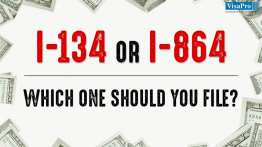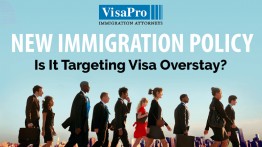Introduction
You have finally arrived in the U.S. with your nonimmigrant visa. There are many things you need to do, however, once you’ve landed to make sure that your stay is smooth and your experience exciting and memorable.
Let’s go over some of the important what’s, when’s, where’s, and how’s of your stay in the U.S. once you have arrived.
Form I-94
As a nonimmigrant visa holder, when you enter the United States temporarily for a specific purpose such as business, study or pleasure, you are issued an I-94, Arrival/Departure Record. The I-94 actually contains the information regarding how long your authorized stay in the U.S. will be.
If you arrive in the U.S. by air or sea and at some land ports of entry, you will be instructed to obtain your I-94 Record online at www.cbp.gov/I94. Most others who enter the U.S. by land will be given a paper I-94 or I-94W (Visa Waiver Entrants).
If you need to extend your stay or want to change your status in the United States, then you must ask for permission from the US Citizenship and Immigration Services (USCIS) before your authorized stay expires. It should be noted that those who enter on Visa Waiver cannot extend their stay and may only adjust status to that of lawful permanent resident in limited circumstances
SSN Number
The Social Security Number (SSN) is a unique number issued by the Social Security Administration (SSA) to US citizens, Permanent Residents, and to certain foreign nationals who meet the eligibility criteria. It is generally required for employment purposes.
The Social Security number has become an important component of working and living in the U.S. as it’s generally required to get a job, collect Social Security benefits and access many other types of government services. Additionally, institutions such as banks and credit companies also require the SSN. In general, only non-citizens who have permission to work from the Department of Homeland Security (DHS) can apply for a Social Security number. To prove your U.S. immigration status, you must present work of your employment authorization (EAD card, I-797 Approval Notice, visa), I-94 Arrival/Departure Record and other proof of age and identity.
It’s important to remember that all lawfully admitted non-citizens can get certain benefits and services without having a Social Security number. You do not need a number to purchase savings bonds, conduct business with a bank, register for school or apply for educational tests, obtain private health insurance, apply for school lunch programs or apply for subsidized housing. You may want to read our article “Obtaining a Social Security Number” for more information about the SSN.
Driver’s License
Some nonimmigrants can work as soon as they come to the U.S. as their authorization to work in the U.S. is directly related.
In the United States, there is no “national” or federal driver’s license. Individual states issue driver licenses for those residing in their state. Each state has individual rules when it comes to who can apply for a driver’s license and the procedures involved.
To find out how to obtain a driver’s license where you live, check out: https://www.usa.gov/motor-vehicle-services.

Employment Authorization
If you are not a citizen or a lawful permanent resident, you can only work in the U.S. if you have specific authorization to work. Some nonimmigrants can work based on their specific nonimmigrant visa and/or status. These include those in H-1B, L-1, O/P, TN, E-1/E-2/E-3, J-1, Q or R-1 status, among others. Foreign nationals who have employment authorized status in the U.S. can generally begin employment as soon as they enter the U.S.
Other nonimmigrants, however, must apply for a separate Employment Authorization Document (EAD) to work in the U.S. These include those in L-2, E-1/E-2/E-3 Dependent, or J-2 status, or those with F-1 OPT. Individuals who require an EAD to work must wait until USCIS issues the EAD before employment can begin. Additionally, the EAD application can only be filed once these individuals have actually entered the U.S. and taken up the relevant status.
Some nonimmigrants are not authorized to work in the U.S. and are ineligible for EAD’s including those in B-1/B-2, H-4 (except in limited circumstances), F-2, M-2, O-3, or P-4 status.
For more information about the EAD, check out “Employment Authorization Document.
Medical Insurance
The United States does not offer socialized medical care, therefore, if you have no health insurance coverage, you will be required to pay for health care as and when required. Healthcare in the U.S. can be expense, especially for any serious injuries or illnesses or in the case of pregnancy, labor & delivery.
Health insurance, while it can also be expensive, is always recommended. If you are not covered by the health insurance you may have in your own country, you can buy health insurance here in the U.S. There are less expensive types of health insurance specifically for those visiting the U.S. for a short time that mainly will cover for catastrophic or unexpected illnesses or events. If you are working in the U.S., you may be able to obtain coverage through your employer or through your spouse’s employer.
Getting Ready To Depart
Unlike in some other countries, there are no cumbersome exit procedures for those in nonimmigrant status. Previously, when CBP was widely using the paper I-94 Record for all nonimmigrants, the nonimmigrant was required to relinquish the I-94 when leaving the U.S. CBP no longer requires this. CBP captures information about your expected and actual departures from flight information provided to CBP from the airlines as well as information they capture themselves at ports of entry.
One important note to remember is that your ability to leave the U.S. may be hampered if you have filed a Change of Status or Adjustment of Status application in the U.S. during your stay. Leaving the U.S. once these applications could cause them to be denied in certain situations unless precautions are taken.
1.Pending Change of Status: A pending change of status request filed with Form I-539 will be considered abandoned if you leave the U.S.
2.Pending Adjustment of Status: Those with a pending Adjustment of Status application (I-485) must have an approved Advance Parole document before leaving the U.S. (unless the nonimmigrant is in H-1B/H-4 or L-1/L-2 status). Leaving without an approved Advance Parole will render your Adjustment of Status application abandoned.
Conclusion
We at VisaPro hope that you have a wonderful experience in the U.S. and that we have answered some of your most pressing questions about your upcoming visit. Please feel free to contact us to discuss any immigration needs for you and your family. Our experienced Immigration Attorneys can assist you with immigrational related matters for the duration of your trip and beyond.
What VisaPro Customers Are Saying
[VisaPro legal team] was incredibly knowledgable and extremely helpful throughout the process. We were exceptionally impressed with how they have combined the great personal and communication skills they bring and also technology with a highly intuitive website which guides you and keeps you updated throughout the process……..This is a true testimonial, I would highly recommend VisaPro to anyone looking for guidance and success in this area."
 Paul Lyons, President, Atlas Intelligence Inc
Paul Lyons, President, Atlas Intelligence Inc



